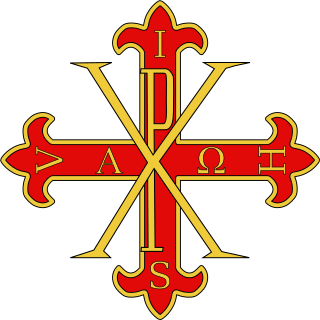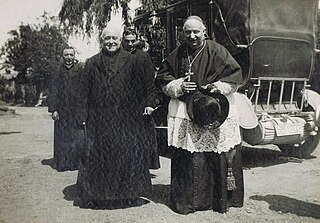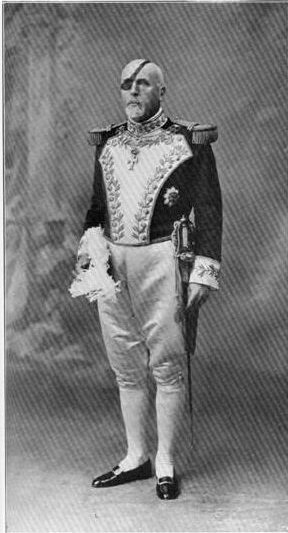
The prince-electors, pl. Kurfürsten, Czech: Kurfiřt, Latin: Princeps Elector) were the members of the electoral college that elected the ruler of the Holy Roman Empire.
The order of precedence in the United Kingdom is the sequential hierarchy for Peers of the Realm, officers of state, senior members of the clergy, holders of the various Orders of Chivalry, and is mostly determined, but not limited to, birth order, place in the line of succession, or distance from the reigning monarch. The order of precedence can also be applied to other persons in the three legal jurisdictions within the United Kingdom:
Master of the Horse is an official position in several European nations. It was more common when most countries in Europe were monarchies, and is of varying prominence today.
A royal household or imperial household is the residence and administrative headquarters in ancient and post-classical monarchies, and papal household for popes, and formed the basis for the general government of the country as well as providing for the needs of the sovereign and their relations. It was the core of the royal court, though this included many courtiers who were not directly employed by the monarch as part of the household.
The papal household or pontifical household, called until 1968 the Papal Court, consists of dignitaries who assist the pope in carrying out particular ceremonies of either a religious or a civil character.

Tao dei Principi Ruspoli is a Thai-born Italian-American filmmaker, photographer, musician, and co-founder of The Bombay Beach Biennale. He is the son of Alessandro Ruspoli, 9th Prince of Cerveteri and part of the Papal nobility.

The Sacred Military Constantinian Order of Saint George, also historically referred to as the Imperial Constantinian Order of Saint George and the Order of the Constantinian Angelic Knights of Saint George, is a dynastic order of knighthood of the House of Bourbon-Two Sicilies. Currently, the grand magistry of the order is disputed among the two claimants to the headship of the formerly reigning House of Bourbon-Two Sicilies as heirs of the House of Farnese, namely Prince Pedro and Prince Carlo. The order was one of the rare orders confirmed as a religious-military order in the papal bull Militantis Ecclesiae in 1718, owing to a notable success in liberating Christians in the Peloponnese. Together with the Sovereign Military Order of Malta, it is one of a small number of Catholic orders that still have this status today. It is not an order of chivalry under the patronage of the Holy See, but its membership is restricted to practising Catholics.
The Roman Court or Papal Curia was reformed by the papal bull Pontificalis Domus issues by Pope Paul VI in 1969. It abolished the role of the old Roman nobility at the papal court with the exception of the position of Prince Assistant to the Papal Throne. The titles abolished, such as the Grand Master of the Sacred Apostolic Hospice and Marshal of the Holy Roman Church and the Sacred Conclave, remain heredity but are now purely honorary.

A chamberlain is a senior royal official in charge of managing a royal household. Historically, the chamberlain superintends the arrangement of domestic affairs and was often also charged with receiving and paying out money kept in the royal chamber. The position was usually awarded as an honour to a high-ranking member of the nobility (nobleman) or the clergy, often a royal favourite. Roman emperors appointed this officer under the title of cubicularius. The Chamberlain of the Holy Roman Church enjoys very extensive powers, having the revenues of the papal household under his charge. As a sign of their dignity, chamberlains bore a key, which in the seventeenth century was often silvered, and actually fitted the door-locks of chamber rooms. Since the eighteenth century, it has turned into a merely symbolic, albeit splendid, rank-insignia of gilded bronze. In many countries there are ceremonial posts associated with the household of the sovereign.

Nicola Canali was an Italian cardinal of the Roman Catholic Church. He served as president of the Pontifical Commission for Vatican City State from 1939 and as Major Penitentiary from 1941 until his death, and was elevated to the cardinalate in 1935. He was Grand Master of the Order of the Holy Sepulchre of Jerusalem, a prestigious papal order of knighthood, from 1949 until 1960.

Gaetano Bisleti S.T.D. was a Cardinal of the Roman Catholic Church and was former Prefect of the Sacred Congregation for Catholic Education.

The House of Ruspoli is historically one of the great aristocratic families of Rome, but is originally from Florence. Following World War II and the fall of Fascism, the newly established Italian Republic officially abolished titles and hereditary honours in its 1946 Constitution, with the exception of the papal nobility of Rome, as those titles had been created by papal authority.

Francesco di Paola Cassetta was an Italian Cardinal of the Catholic Church who served as Prefect of the Sacred Congregation of the Council from 1914 until his death, and was elevated to the cardinalate in 1899.

Alessandro, Principe Ruspoli, Grand Master of the Sacred Apostolic Hospice, was the 7th Principe di Cerveteri, 7th Marchese di Riano, 12th Conte di Vignanello and Prince of the Holy Roman Empire, son of Francesco Maria Ruspoli, 6th Prince of Cerveteri and wife Egle dei Conti Franchesi.

Pontificalis Domus was a motu proprio document issued by Pope Paul VI on 28 March 1968, in the fifth year of his pontificate. It reorganized the Papal Household, which had been known until then as the Papal Court.
The orders, decorations, and medals of the Holy See include titles, chivalric orders, distinctions and medals honoured by the Holy See, with the Pope as the fount of honour, for deeds and merits of their recipients to the benefit of the Holy See, the Catholic Church, or their respective communities, societies, nations and the world at large.

The papal nobility are the aristocracy of the Holy See, composed of persons holding titles bestowed by the Pope. From the Middle Ages into the nineteenth century, the papacy held direct temporal power in the Papal States, and many titles of papal nobility were derived from fiefs with territorial privileges attached. During this time, the Pope also bestowed ancient civic titles such as patrician. Today, the Pope still exercises authority to grant titles with territorial designations, although these are purely nominal and the privileges enjoyed by the holders pertain to styles of address and heraldry. Additionally, the Pope grants personal and familial titles that carry no territorial designation. Their titles being merely honorific, the modern papal nobility includes descendants of ancient Roman families as well as notable Catholics from many countries. All pontifical noble titles are within the personal gift of the pontiff, and are not recorded in the Official Acts of the Holy See.

Castello Ruspoli is a 16th-century castle in the town of Vignanello, Lazio, Italy. It continues to be the property of the Ruspoli family, an old and noble Italian family. It is well known for its Renaissance-era Giardino all'italiana.

Don Francesco, Principe Ruspoli is an Italian banker who is the 10th Principe di Cerveteri, 10th Marchese di Riano, 15th Conte di Vignanello and Prince of the Roman Papal State.

Duke of Sueca is a title of Spanish nobility, Grandee of Spain 1st class. It was created by King Charles IV of Spain in 1804 for Manuel Godoy, who was the Prime Minister of Spain from 1792 to 1797 and from 1801 to 1808. Its name refers to Sueca in the Province of Valencia in Spain.














